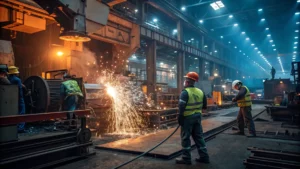The nationalization of the steel industry in post-war Britain was a significant policy decision with far-reaching consequences. The move aimed to consolidate control over a vital sector of the economy, aiming to ensure its efficient operation and strategic importance. The government’s rationale for nationalization was rooted in the belief that it could better manage the industry’s resources and direct investment towards strategic goals. This approach was intended to foster economic growth and national security. The nationalization process itself presented numerous challenges. Integrating diverse steel companies into a unified nationalized entity proved complex. The transition involved significant restructuring, workforce adjustments, and the need to adapt existing infrastructure and production methods. The process was not without its critics, who argued that it stifled innovation and entrepreneurial spirit within the industry. The long-term economic impact of steel nationalization remains a subject of debate. While proponents argued that it fostered greater control and efficiency, critics pointed to potential inefficiencies and bureaucratic hurdles. The nationalization policy had a profound impact on the British economy, influencing investment patterns, employment levels, and the overall industrial landscape. The legacy of this policy continues to be studied and debated by historians and economists.
The Economic Impact of Steel Production on Post-War Britain
Steel production played a crucial role in the economic recovery and development of post-war Britain.




